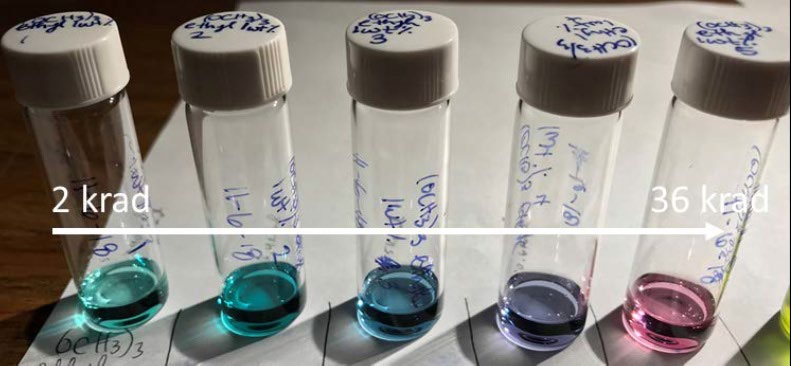Tech Briefs
Savannah River National Laboratory
Organic Radio-chromic Compounds and Radiation Sensing Systems
Technology Overview
Savannah River National Laboratory (SRNL) has developed and tested radiation sensitive compounds that generate a visible color response to radiation at varying dose levels significant to first responders. These materials can be incorporated into polymer-based composites as well as fabrics.

Benefits
- Environmental stable chromophore that changes colors to gamma radiation
- Visible to the naked eye
- Extremely low cost and disposable or reversible designs available
Applications
- First responder extremity monitoring for incidental exposure
- Nuclear facility passive monitoring
- Nuclear non-proliferation activities
Description
Organic radio-chromic compounds (ORC) visually display (for instance, via spectroscopy or other visualization techniques) the presence of radiation (e.g., ionizing radiation, high energy radiation, etc.) and have increased the safety of workers in many fields including first responders, researchers, and those involved in the nuclear power and weapons industries. In addition, while detection of all forms of radiation (e.g. α, β, and γ) is important, the ability to quickly and visually detect γ radiation at low dosage levels is particularly relevant due to the potential danger and difficulty in shielding from γ radiation.

Leuco dyes are dyes that can switch between visually differentiable forms under thermal, optical, or some other stimulus. Leuco dyes have been investigated as radiation-detecting chromophores and have shown promise for responses required within a few thousand rad. The most common leuco dye, and the one typically used in radiation detecting applications, is malachite green. In radiation detection applications, leuco dyes have been shown to have sensitivities ranging from about 2,500 to about 4 x 106 rad. While such sensitivity levels have proven useful, leuco dyes capable of exhibiting increased sensitivities, e.g., in the millirad range, would be of great benefit. Further, existing radiation detection systems can only be utilized one time and the system becomes completely degraded, further adding to cost of the systems. What is needed in the art are leuco dyes and systems incorporating the leuco dyes that can detect low level γ radiation doses quickly and effectively.
Intellectual Property
Operational scale demonstrations have been performed on the base material as well as in multiple substrates showing environmental, light, and water stability for at least 4 hours. The technology has been submitted for a U.S. Application #16775558 (January 29, 2020), “Malachite Green Based Radio-Chromic Compounds and Radiation Sensing Systems Incorporating the Compounds.”
Partnering Opportunities
SRNL invites interested companies with proven capabilities in this area of expertise to develop commercial applications for this process under a cooperative research and development agreement (CRADA) or licensing agreement. Interested companies will be requested to submit a business plan setting forth company qualifications, strategies, activities, and milestones for commercializing this invention. Qualifications should include past experience at bringing similar products to market, reasonable schedule for product launch, sufficient manufacturing capacity, established distribution networks, and evidence of sufficient financial resources for product development and launch.
Download Tech Brief
Contact Information
Savannah River National Laboratory
E-mail: partnerships@srnl.doe.gov